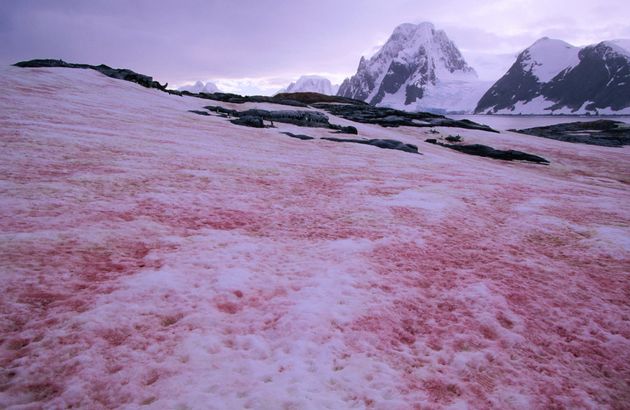 Some call it pink snow, some call it watermelon snow — and now, a new study is calling it yet another symbol of the drastic melting in the Arctic.
Some call it pink snow, some call it watermelon snow — and now, a new study is calling it yet another symbol of the drastic melting in the Arctic.
The appearance of the so-called pink snow, which Arctic explorers have observed for centuries, is the result of a red algae that likes to bloom in the frozen water. In a study published Wednesday in the journal Nature Communications, researchers found that those algal blooms are causing the ice to melt faster, and the algae is likely to grow more rapidly as climate change melts even more of the Arctic into the liquid water that feeds them.
The presence of red algae, the study found, lowers the snow’s albedo, or its ability to reflect light instead of absorbing it as heat (similarly to how a white T-shirt keeps you cooler in the sun than a black or colorful one does). Over a 100-day period during the melting season, the study found that snow affected by the red algae had a 13 percent lower albedo than white snow.





 The Trump Administration has dismissed the scientists working on the country's flagship climate report, a move...
The Trump Administration has dismissed the scientists working on the country's flagship climate report, a move... On a hot day, there’s nothing quite like a refreshing drink of water. But how would...
On a hot day, there’s nothing quite like a refreshing drink of water. But how would... A severe weather outbreak was possible April 28 in the upper Midwest, forecasters warned, the first...
A severe weather outbreak was possible April 28 in the upper Midwest, forecasters warned, the first...






























